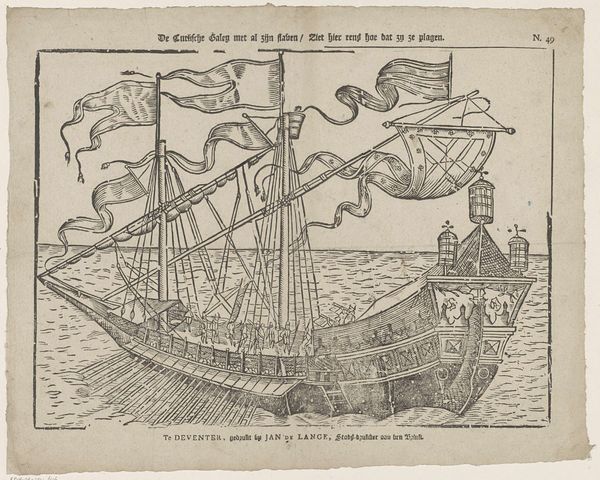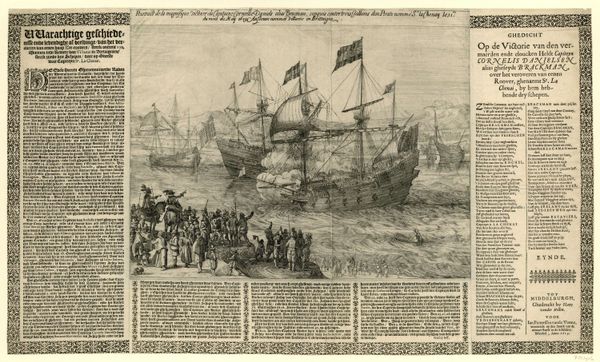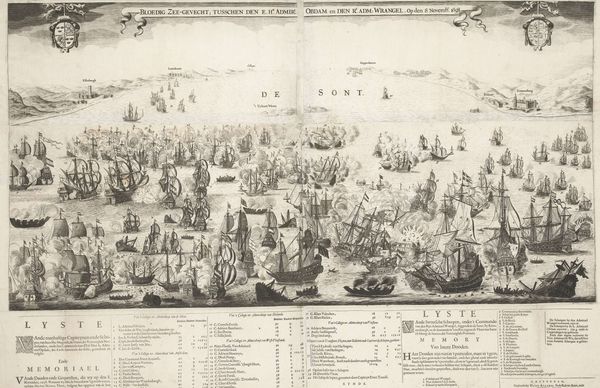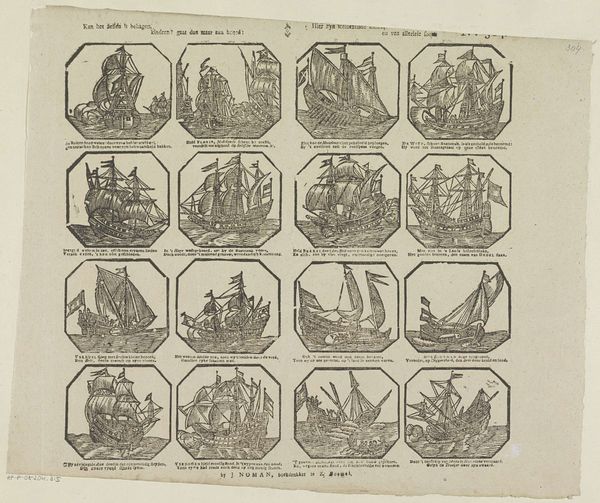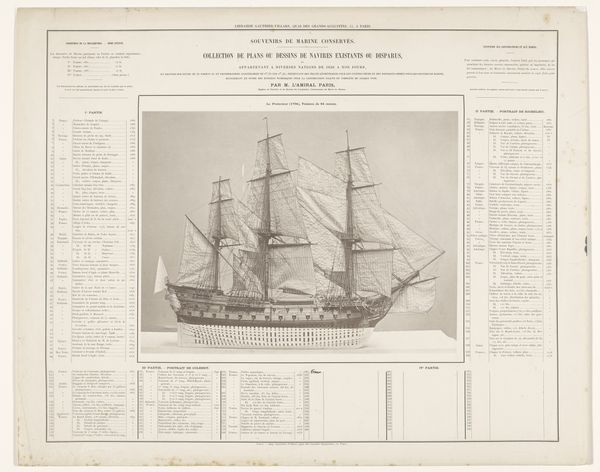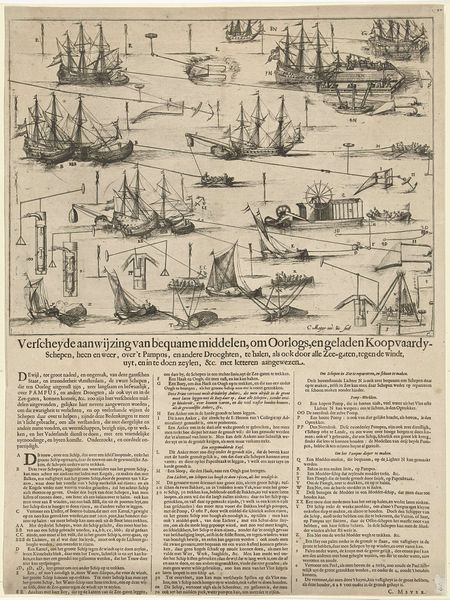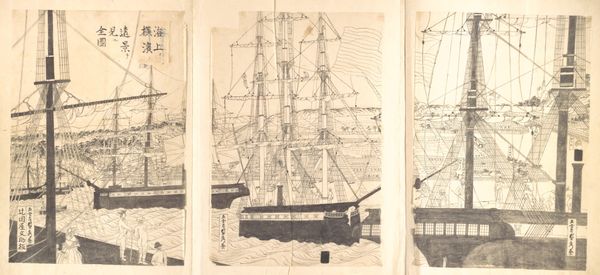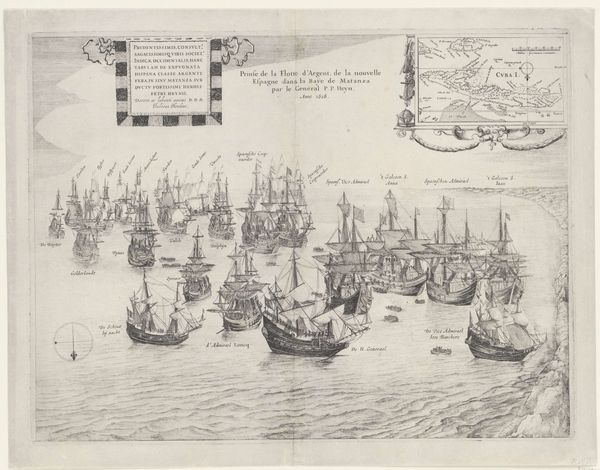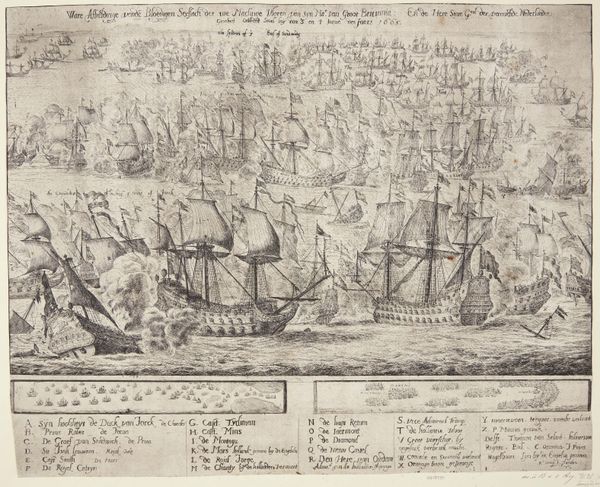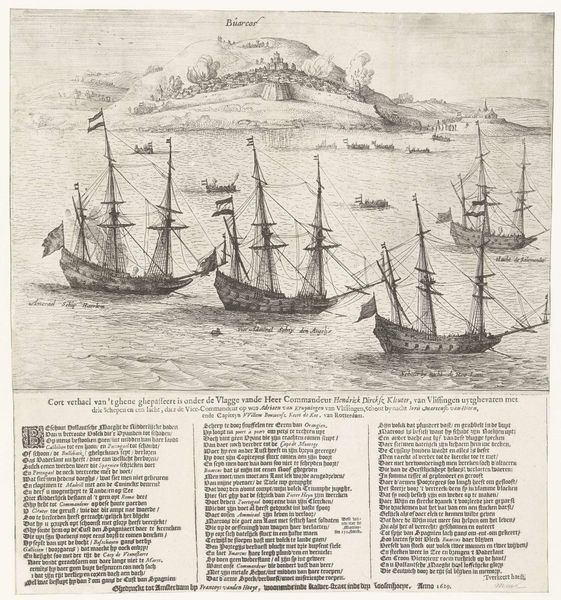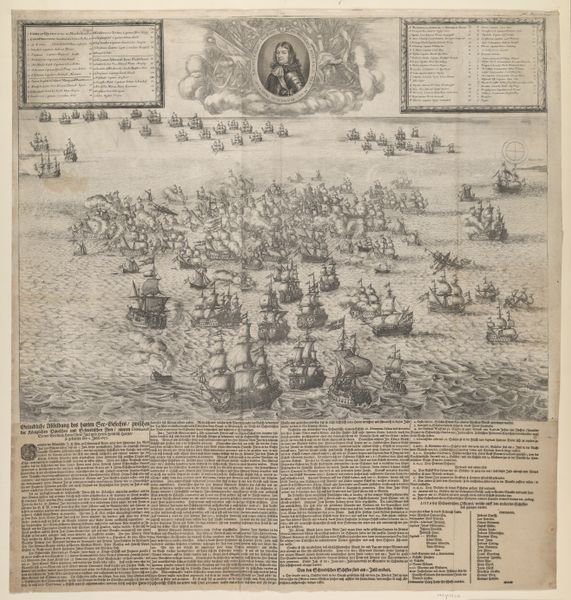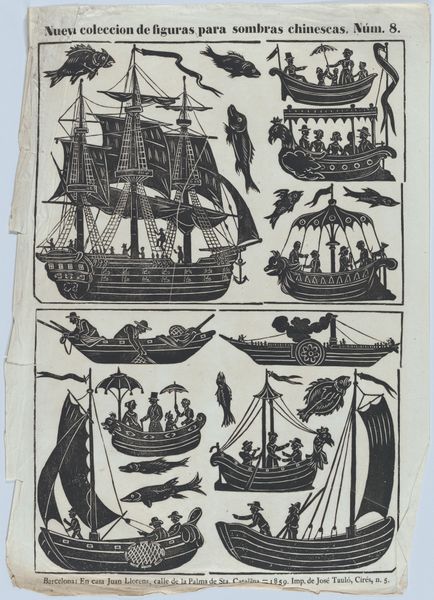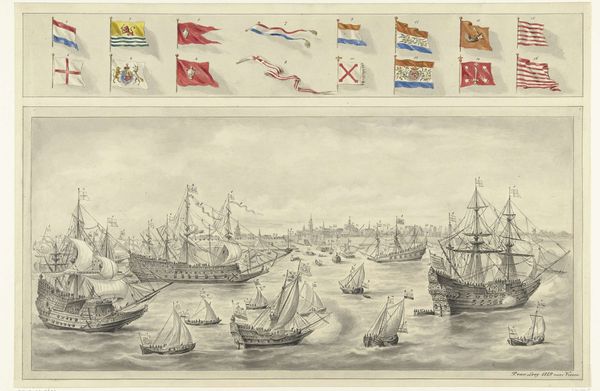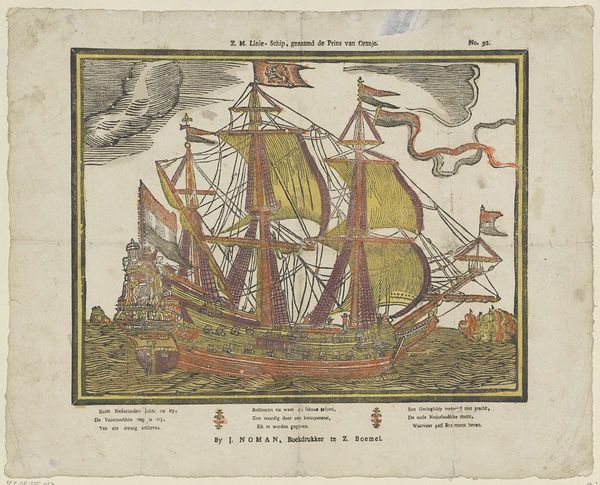
Nuewe tafel voor alle Lief hebbers en Zeevaarende persoonen vertoonende een Oorloghs-schip (...) 1709
0:00
0:00
print, engraving
#
baroque
# print
#
old engraving style
#
geometric
#
line
#
history-painting
#
engraving
Dimensions: height 510 mm, width 591 mm
Copyright: Rijks Museum: Open Domain
Editor: This engraving, titled "Nuewe tafel voor alle Lief hebbers en Zeevaarende persoonen vertoonende een Oorloghs-schip (...)," from 1709, portrays a warship with intricate details. It's like a technical diagram blended with an artistic representation. I am immediately struck by its documentary style and its promise to reveal a historical, maybe even a social, situation. How do you see this image functioning within its historical context? Curator: This image is not just a document but a window into the intricate relationship between power, technology, and global exploration during the Baroque period. Ships like this one were crucial for colonialism and resource extraction, directly contributing to systems of exploitation. Looking closely, can you discern any visual elements that hint at the social or political power these vessels represented? Editor: Well, there’s definitely a sense of order and control in how the ship’s components are laid out and labelled. It gives me the impression that the engraver is revealing or celebrating the ability of humankind to master nature. But are you suggesting that this mastery came at a price? Curator: Absolutely. The 'mastery' depicted here relies on exploited labor, resource plundering, and the violence inherent in colonial expansion. We need to consider the unacknowledged stories—those who built the ships, those whose lands were invaded by them, those enslaved and transported across the seas on similar vessels. These perspectives often remain invisible in such apparently "objective" depictions. Editor: So, you're saying that this image normalizes a certain worldview, silencing dissenting voices. If this image was a voice, it speaks for the colonizers and suppresses the suffering they inflicted on colonized populations. Curator: Exactly. By dissecting this visual representation, we can start to uncover these hidden narratives and better understand how art participates in the formation and maintenance of power structures. This shifts the focus to the victims, placing their perspectives front and center. Editor: This is really giving me a fresh angle from which to consider the work of this time period. Curator: And hopefully encouraging you to continue questioning whose stories get told and whose remain untold within our histories.
Comments
No comments
Be the first to comment and join the conversation on the ultimate creative platform.
